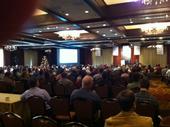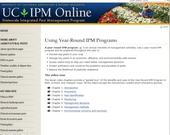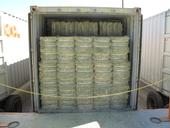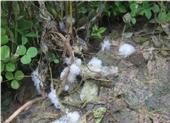- Author: Daniel H Putnam
THE WORLD AG EXPO FORAGE CHALLENGE deadline has been extended until December 19, 2012. Hurry to get your samples in right away!
There are $18,000 worth of prizes for the winners, and it's a point of pride for farmers to show their skill in the art and science of haymaking and silage production. Growers submit samples that will be up against all other growers in the Western States. These are analyzed blindly by Cumberland Valley Analytical Services in Maryland, the data managed by University of California forage experts and judged by independent nutritionists. There are three categories: alfalfa hay, conventional corn silage, and BMR corn...
- Author: Shannon C. Mueller

The 2012 Alfalfa & Grains Symposium was a tremendous success. There were over 450 people in attendance, great speakers and a variety of exhibitors showcasing the latest in alfalfa and grains seed, production supplies and equipment.
If you missed the conference, all presentations were recorded and will soon be available on the alfalfa website (http://alfalfa.ucdavis.edu).
Make plans to attend the symposium in December 2013! It is sure to be chock full of valuable information.
- Author: Peter B Goodell

Useful resources:
On-line training for Year Round IPM Programs
Alfalfa Pest Management Guidelines
The UC Statewide IPM Program has announced the availability of an on-line tutorial to aid in the use of Year Round IPM Programs.
Year Round IPM Programs were developed as another means to retrieve information from the comprehensive Pest...
- Author: Daniel H Putnam

For the latest twist in the rhetorical water wars in western states, you may be interested in a recent Wall Street Journal op-ed piece, featuring, you guessed it, that scourge of agricultural water critics, alfalfa. This article decries the export of alfalfa hay from California to China, making the point that when alfalfa is exported, it represents the export of badly needed ‘water' (see http://alfalfa.ucdavis.edu/-files/pdf/CulpGlennon2012.pd ffor a pdf of that...
- Author: Carol A Frate

We may begin to see symptoms (stem wilting) and signs (white fungal mycelium growing on stems) of Sclerotinia stem and crown rot now that there has been some rain and fog. Although the fungus infects mature plants, we are most concerned when the disease infects fall planted fields because seedlings and young plants are more easily killed by Sclerotinia than established alfalfa plants.
The disease begins in the late fall/early winter when spore bearing structures (apothecia) are produced by the fungus on the soil surface. Apothecia production is triggered by cold, wet soil. We have had some cold weather and in many places in the Central Valley there has been sufficient rain to promote apothecia production. Spores,...



